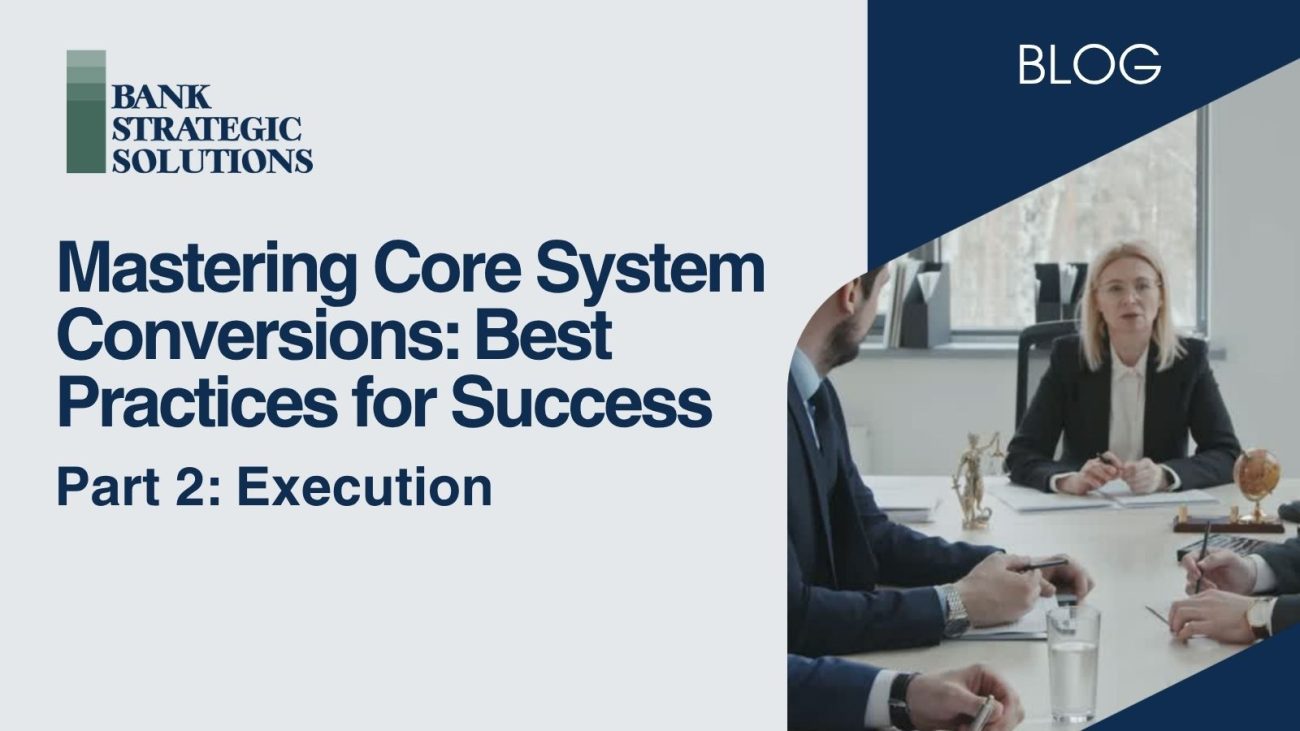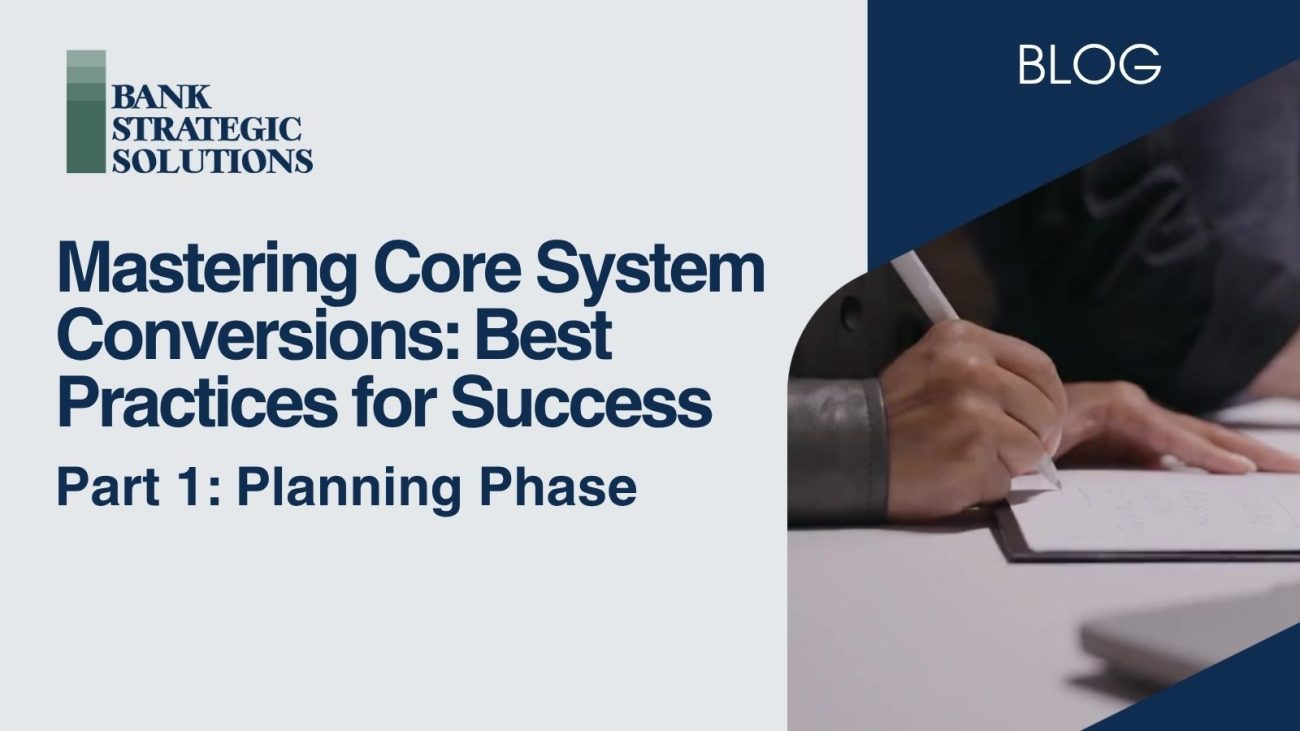It’s Budget Season
How many new projects are in the pipeline for 2026? Likely its more than there are dollars allocated for projects. Deciding how to prioritize often requires teams to sift through hundreds of…

The Strategic Framework for Budget Allocation
Start with Business Outcomes, Not Technology Features
The most successful technology investments begin with clear business objectives rather than flashy features. Before evaluating any vendor solution, establish what success looks like in measurable terms. What is your goal/desired future state? Are you seeking to reduce operational costs by a specific percentage? Improve customer acquisition rates? Enhance compliance efficiency? Decrease fraud losses?
Creating a hierarchy of business priorities provides the foundation for budget allocation. Rank your objectives based on potential impact, time to complete, regulatory requirements, overall cost and, alignment with your institution’s strategic plan. You may also consider the competition risk of not adding the proposed project. This matrix driven approach ensures technology spending supports genuine business needs rather than pursuing solutions in search of problems.
A growth minded financial institution may heavily invest in technology that increases customer acquisition while an innovative financial institution may be early adopters and spend more on new technology.
Implement a Global Approach to Investments
Rather than viewing each vendor relationship as an isolated decision, successful banks adopt a global mindset. This means considering how different technology investments complement each other and contribute collaboratively to reach the broader institutional goals.
Divide your technology investments into three categories: foundational systems that ensure basic operations and compliance, growth-enabling solutions that drive revenue and market expansion, and innovation projects that position your institution for future opportunities. Typically, foundational technology accounts for more than 50% of the allocation while the growth and innovation project percentages depend on the mindset of the organization leaders. A growth minded financial institution may heavily invest in technology that increases customer acquisition while an innovative financial institution may be early adopters and spend more on new technology.
Prioritization Strategies That Drive Results
The Risk-Adjusted ROI Model
Traditional ROI calculations often fall short in technology decisions because they fail to account for risk mitigation and regulatory benefits. Develop a risk-adjusted ROI model that quantifies both the financial return and the risk reduction value of each potential investment.
For example, a fraud prevention solution might show modest direct ROI through reduced losses, but the risk-adjusted calculation should include avoided regulatory penalties, reputation protection, and customer retention benefits. This comprehensive approach often reveals that compliance and risk management technologies deliver higher real returns than initially apparent.
Stakeholder Impact Assessment
Effective prioritization requires understanding how technology investments affect different stakeholder groups. Create a matrix evaluating each potential investment’s impact on customers, employees, shareholders, and regulators. Solutions that deliver positive outcomes across multiple stakeholder groups typically warrant higher priority and budget allocation.
Customer-facing technologies should be evaluated not just on functionality but on their ability to improve satisfaction scores and reduce service costs. Employee-focused solutions should demonstrate clear productivity gains or compliance burden reduction. Regulatory technologies must show measurable improvements in examination readiness and reporting efficiency.
Maximizing Investment Returns
Vendor Selection Beyond the Sales Presentation
The most expensive technology investment is one that fails to deliver promised results. Beware of the slick sales teams overselling their product. Move beyond impressive demonstrations to evaluate vendors based on implementation track record, ongoing support quality, and fit with your institution’s culture and goals.
Request detailed case studies from similar-sized institutions, including both successes and challenges encountered during implementation. Speak directly with references, asking specific questions about project timelines, unexpected costs, roadmap rollouts and post-implementation support quality. Too often banks discover that the lowest-priced solution can become the most expensive when hidden costs and extended implementation timelines are considered.
Implementation Excellence
Even the best technology solutions can fail without proper implementation discipline. Establish clear project governance with defined roles, milestones, and success metrics. Assign dedicated internal resources rather than treating implementation as an addition to existing responsibilities.
Create detailed change management plans that address employee training, process modifications, and customer communication. Many technology investments fail not because of technical issues but because organizations underestimate the human element of change. Leverage the employees that will be using the technology to fully test the system capabilities. Optimal utilization of any software will be limited if the end users are not included in end-to-end system testing. Budget both time and money for comprehensive training and change management support.
Ongoing Optimization and Value Realization
Technology investment doesn’t end at “Go-Live.” Establish a regular review process to ensure solutions continue delivering expected value and identify optimization opportunities. Schedule business reviews at least annually with key vendors to assess performance against original objectives and explore additional value opportunities. Technology providers often release new features or capabilities that can enhance your investment return without additional licensing costs. Often banks discover they’re utilizing only a fraction of their technology investments’ capabilities.
Turning Budget Discipline Into Competitive Advantage
Maximizing your technology budget requires disciplined strategic thinking, rigorous prioritization, and excellent execution. The abundance of vendor options creates both opportunity and risk. Banks that approach technology investment with clear business objectives, comprehensive evaluation processes, and strong implementation discipline will achieve superior returns while positioning themselves for long-term success.
The goal isn’t to find the perfect technology solution. It’s to build a portfolio of investments that collectively advance your institution’s strategic objectives while delivering measurable value to all stakeholders. In today’s competitive environment, this disciplined approach to technology investment is essential for sustained success.
Recent Articles
- Mastering Core System Conversions: Best Practices for Success
 Part 2: Execution
Part 2: Execution
Core conversions are considered a necessary evil by many bankers. It’s a huge undertaking and impacts nearly everyone in the bank, not to mention customers. - Mastering Core System Conversions: Best Practices for Success
 Part 1: Planning Phase
Part 1: Planning Phase
A core system conversion is one of the most complex and consequential undertakings banks can face. It’s not just a technology switch; it’s a complete transformation that impacts operations, customer experience, compliance, and competitive positioning. - Mortgage Point: Credit Quality Concerns Ripple Through Banking Sector
 Credit quality became an increasing cause of concern among lenders and analysts after JPMorgan Chase CEO Jamie Dimon discussed his concern regarding recent bankruptcies… Read more: Mortgage Point: Credit Quality Concerns Ripple Through Banking Sector
Credit quality became an increasing cause of concern among lenders and analysts after JPMorgan Chase CEO Jamie Dimon discussed his concern regarding recent bankruptcies… Read more: Mortgage Point: Credit Quality Concerns Ripple Through Banking Sector